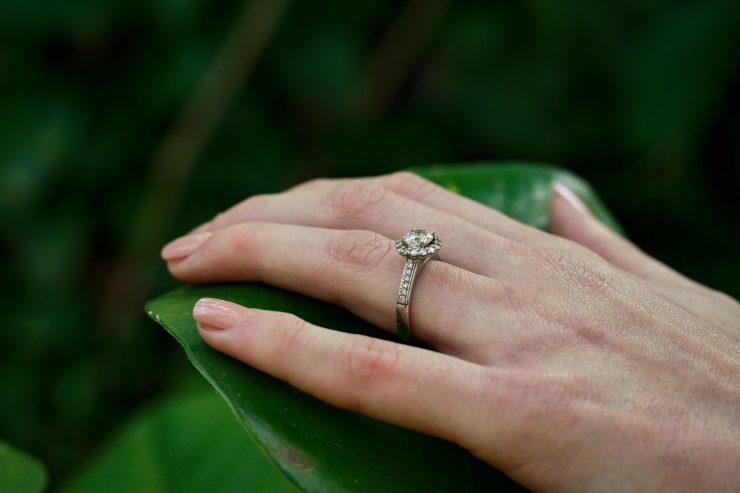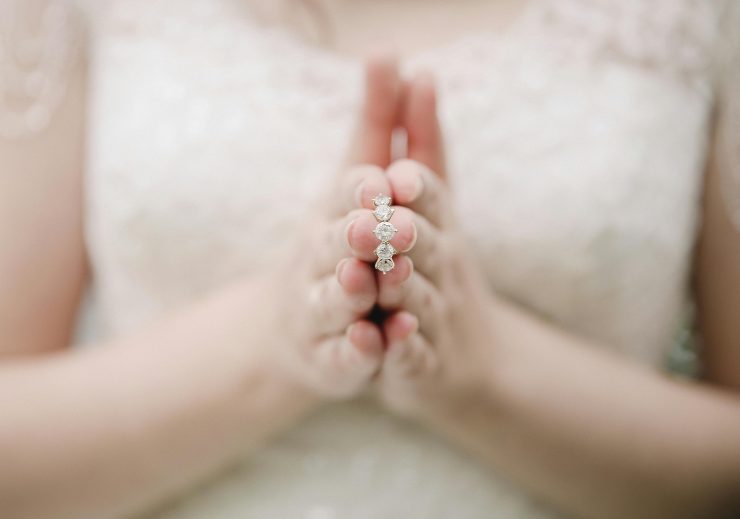Lab-grown diamonds are chemically, physically, and optically identical to natural diamonds, but they are created in a controlled laboratory environment rather than mined from the earth. Two primary methods are used in the production of lab-grown diamonds: High Pressure High Temperature (HPHT) and Chemical Vapor Deposition (CVD). Both processes simulate the conditions under which diamonds naturally form, resulting in crystals that share the same properties as their natural counterparts. This technological achievement allows for a more affordable and sustainable option for consumers. For first-time buyers, it’s crucial to understand that lab-grown diamonds are not imitations like cubic zirconia or moissanite—they are real diamonds in every measurable way. They are graded by the same gemological institutes, including the Gemological Institute of America (GIA) and the International Gemological Institute (IGI), and they come with the same types of certification reports. Knowing this helps set realistic expectations and dispels common misconceptions that may influence a purchasing decision.

Cost Benefits and Pricing Transparency
One of the primary advantages of lab-grown diamonds for first-time buyers is cost. Lab-grown diamonds typically cost 40% to 70% less than mined diamonds of comparable quality. This pricing difference is not a reflection of inferior quality but rather of the more streamlined supply chain and lower production costs associated with lab-created stones. For buyers who want a larger stone or higher clarity and color without exceeding their budget, lab-grown options can offer significantly better value. It’s important to note that while the upfront savings are considerable, lab-grown diamonds may have lower resale value and limited appreciation potential when compared to their mined counterparts. Transparency in pricing is generally more accessible with lab-grown stones, especially when purchased online. Many reputable retailers provide clear breakdowns of pricing factors such as carat weight, cut quality, color, and clarity. Understanding these factors allows first-time buyers to make well-informed choices without overpaying or settling for substandard options.
The Importance of Certification and Grading Reports
Certification is a crucial aspect of buying a lab-grown diamond, particularly for first-time buyers unfamiliar with gemological standards. A certificate from a reputable institution, such as the GIA, IGI, or the American Gem Society (AGS), provides a comprehensive analysis of the diamond’s characteristics, including the Four Cs: cut, color, clarity, and carat weight. These grading reports also specify whether the diamond was created using HPHT or CVD technology, offering transparency in origin and manufacturing process. For a first-time buyer, relying on certified diamonds ensures that the gem has been evaluated objectively by independent professionals and is not misrepresented in terms of quality or value. Without a certificate, it becomes challenging to compare diamonds across different retailers or determine whether a price is justified. It’s also worth checking if the certificate is laser-inscribed on the diamond’s girdle, which adds another layer of security and authenticity verification. Buyers should always request to see the certificate before making a final purchase decision.
Where to Buy: Online vs. Brick-and-Mortar Retailers
First-time buyers of lab-grown diamonds face a crucial choice in where to make their purchase—online or in-store. Each option offers distinct advantages and challenges. Online retailers often provide a wider selection of stones and better prices due to lower overhead costs. Many established online platforms offer 360-degree videos, high-resolution images, and in-depth grading reports, which can empower consumers to make confident decisions without physically seeing the diamond. However, the experience can be daunting for those unfamiliar with diamond shopping, especially since the buyer cannot handle the stone before purchase. On the other hand, brick-and-mortar retailers offer the benefit of personalized service and the opportunity to inspect diamonds in person. This can be particularly valuable for assessing how a diamond looks in different lighting conditions or when set in a specific type of jewelry. For first-time buyers, a hybrid approach may be beneficial—conducting initial research online to understand pricing and quality parameters, followed by visiting a local jeweler to compare options and ask questions in person.
Ethical and Environmental Considerations
Lab-grown diamonds have gained popularity among environmentally conscious and ethically minded consumers due to their minimal environmental impact and transparent supply chain. Traditional diamond mining can lead to deforestation, soil erosion, and the displacement of communities. In contrast, lab-created diamonds require significantly less land, water, and energy—especially when produced using renewable power sources. Additionally, lab-grown diamonds are free from the ethical concerns associated with conflict diamonds, which are mined in war zones and sold to finance armed conflict against governments. Many first-time buyers are motivated by the assurance that their purchase does not contribute to human rights abuses or environmental degradation. It’s still essential to verify that a retailer’s production methods are environmentally responsible and not merely greenwashed for marketing purposes. Certifications like the SCS-007 (Sustainability Rated Diamond Standard) are emerging to help consumers identify diamonds that meet specific sustainability benchmarks. Understanding these considerations can be an integral part of a conscientious purchasing strategy.

How to Evaluate the Four Cs in Lab-Grown Diamonds
When shopping for lab-grown diamonds, understanding how to evaluate the Four Cs—cut, color, clarity, and carat weight—is fundamental to making a confident purchase. Cut is often considered the most important factor, as it directly affects how the diamond reflects light and appears to sparkle. Even a high-clarity, large-carat diamond can appear dull if it has a poor cut. Color refers to the degree of colorlessness in white diamonds, rated from D (colorless) to Z (noticeable color). Most buyers find diamonds in the G-H range offer a great balance between value and visual appeal. Clarity assesses the presence of internal or external imperfections, known as inclusions and blemishes, respectively. Lab-grown diamonds often have fewer inclusions due to their controlled formation process, although some may contain metallic inclusions from the manufacturing method. Carat weight, which refers to the size of the diamond, can greatly affect price, but should be considered in relation to the other Cs for optimal value. First-time buyers should balance these characteristics based on personal priorities, whether they prefer visual perfection, larger size, or cost efficiency.
Choosing the Right Setting for Your Diamond
The setting of a lab-grown diamond plays a significant role not only in the aesthetic of the final piece but also in its functionality and security. For first-time buyers, choosing a setting that enhances the diamond while protecting it from potential damage is essential. Common setting styles include solitaire, halo, pavé, bezel, and three-stone designs. A solitaire setting emphasizes the central diamond and is ideal for those who want simplicity and elegance. Halo settings, which surround the center stone with a ring of smaller diamonds, create the illusion of a larger diamond and increase brilliance. Bezel settings offer the most protection by encasing the diamond in metal, making them a great choice for individuals with active lifestyles. The type of metal—such as platinum, white gold, yellow gold, or rose gold—can also impact the diamond’s appearance. For instance, white metals can enhance the icy look of a colorless diamond, while warmer tones may complement diamonds with faint color. Buyers should consider both lifestyle and personal taste when selecting a setting.
Warranty, Return Policies, and After-Sale Services
Another key consideration for first-time buyers is understanding the warranties, return policies, and after-sale services provided by the retailer. Reputable vendors often offer lifetime warranties that cover manufacturing defects, prong tightening, cleaning, and re-polishing. These services can help maintain the diamond’s appearance and structural integrity over time. Equally important is the return policy. Since purchasing a diamond can be a significant emotional and financial decision, many consumers appreciate having the flexibility to return or exchange the item if it does not meet expectations. A return window of 30 days is common, but policies can vary significantly between retailers. Additionally, first-time buyers should inquire about upgrade programs, which allow customers to trade in their original diamond for a larger or higher-quality one in the future, typically by paying the difference in cost. Transparent and supportive after-sale service not only builds trust but also ensures that the buyer continues to feel satisfied long after the purchase has been made.
Market Trends and Resale Value Considerations
While lab-grown diamonds are an excellent option for those seeking beauty and value, first-time buyers should also consider long-term market trends and the resale landscape. One of the most significant differences between lab-grown and natural diamonds lies in their secondary market behavior. Lab-grown diamonds tend to depreciate more rapidly and often do not hold their value as well as natural diamonds. This is largely due to ongoing technological advances that continue to reduce production costs, increasing supply and driving prices down. Consequently, buyers should approach a lab-grown diamond purchase as an expenditure rooted in personal enjoyment rather than investment potential. That said, rising consumer acceptance and demand have helped to legitimize the market, and some retailers are beginning to offer buyback or resale programs. Still, first-time buyers who value long-term financial retention should be aware that lab-grown diamonds are better suited for emotional or practical purchases rather than speculative assets.
Final Thoughts: Making an Informed First Purchase
Purchasing a lab-grown diamond for the first time can be both exciting and overwhelming. With the right approach, however, buyers can make a well-informed decision that suits their budget, lifestyle, and ethical values. Starting with a solid understanding of what lab-grown diamonds are—and what they are not—lays the foundation for clarity throughout the buying journey. Evaluating diamonds based on the Four Cs, selecting a reputable retailer with clear certification practices, and considering setting styles are all vital steps. Moreover, taking note of after-sale services and the potential for resale or upgrades ensures long-term satisfaction. Although lab-grown diamonds may not appreciate in value, their affordability and ethical appeal make them a compelling choice for those entering the diamond market for the first time. Ultimately, a successful first purchase is one where the buyer feels confident, informed, and aligned with the values represented by their choice.